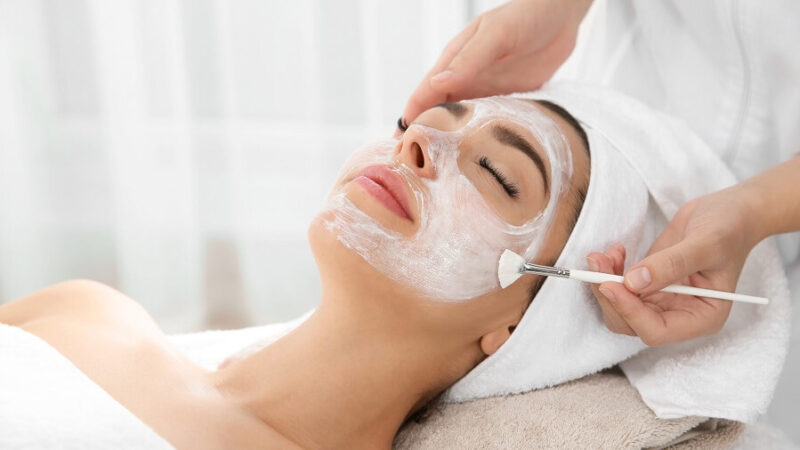5 Natural treatments for allergy relief

Allergies are your body’s reaction to allergens (foreign particles), and they are an indication that your immune system is working overtime. When your body first meets an allergen, your plasma cells generate IgE (immunoglobulin E), an allergen-specific antibody. IgE binds to the surface of mast cells. Mast cells are abundant in your surface tissues (those that are in close proximity to the external environment, such as your skin and nasal mucous membranes), where they help mediate inflammatory reactions.
Histamine is one of the key chemical mediators released by mast cells.
So, the second time your body meets an allergen, the mast cells get activated and produce a potent cocktail of histamine, leukotrienes, and prostaglandins, triggering the complete cascade of allergy symptoms: runny nose, sneezing, hacky cough, sore throat, itchy eyes, and so on.
Histamine can restrict your airways, as in asthma, or make your blood vessels more permeable, resulting in fluid leakage or hives. Leukotrienes promote mucus hypersecretion, which is often shown as a runny nose or increased phlegm.
Pollen is a typical mast cell activator, although other substances can also initiate similar processes. Allergies can be triggered by mould spores, airborne pollutants, dust, pet dander, dust mites, environmental chemicals, cockroaches, personal care products, cleaning agents, and meals. Here are our top five natural treatments for allergy relief from Allergy Field.
- Purify Your Nasal Passage
Pollens clinging to your mucous membranes are one of the most prevalent causes of allergy flare-ups. If pollen is present, your mucus membranes, or the glands lining the inside of your nose that generate mucus, will work overtime to make mucus. As a result, keeping your nose clean is essential for decreasing allergy symptoms.
A neti pot is the most often utilised method for clearing out your nasal passages and cleaning your mucous membranes of pollen. This nasal irrigation therapy resembles a little teapot that you fill with saline solution and pour into one of your nostrils. Keep your head inclined so that the solution enters the other nostril. It will feel strange at first, but once you have properly cleaned your nasal passages with a neti pot, you will feel considerably less congested. Keep in mind that you may need to repeat this approach several times each day to keep pollen out of your nose and avoid allergy symptoms such as sneezing and watery eyes.
When used properly, neti pots are amazing, but when misused, they can exacerbate symptoms and even spread illness.
- Apple Cider Vinegar
The best apple cider vinegar is Bragg’s, which is now widely available. It is organic, GMO-free, unfiltered, raw (not pasteurised! ), and USDA & Kosher certified. It also includes the magnificent “Mother” of vinegar.
The greatest approach to wake up every morning is to drink a glass of water with a spoonful of apple cider in it and a squeeze of fresh lemon juice. Add 1 teaspoon of apple cider to your Neti Pot solution for a wonderful sinus flush at the first indication of an allergy attack.
Raw local honey (Bee Pollen)
Who would have thought that something so sweet and tasty could be so healthy? Your body will get tolerant to the neighbourhood pollen that irritates your sinuses if you consume a spoonful of local, raw (local) honey daily.
An article on the effects of pre-seasonal birch pollen honey use on people with birch pollen allergies was published in the International Archives of Allergy and Immunology in 2011. Researchers found that those who used the honey “reported a 60% lower total symptom score, twice as many asymptomatic days, 70% fewer days with severe symptoms, and they used 50% less antihistamines compared to the control group” who took conventional medications.
I advise ingesting 1 tbsp of raw, local honey every day.
- Quercetin
Quercetin, a bioflavonoid that is naturally present in cruciferous vegetables, onions/shallots, green teas, and citrus fruit, stabilises the release of histamine and aids in the natural management of allergy symptoms.
According to a recent study from Slovakia, quercetin can reduce allergic asthma symptoms by calming down the overactive airways. Since peanut allergies are the most common cause of deadly or life-threatening allergic reactions, Iranian researchers have demonstrated the effectiveness of quercetin in controlling these allergies.
According to a number of sites, quercetin is best used as a long-term treatment, and those who are prone to seasonal allergies should begin taking it a few weeks before spring arrives and the plants begin to blossom.
- Keep Your House Clean
Everyone who suffers from allergies should thoroughly clean their home. You probably bring allergy-triggering pollens inside from outside as seasonal allergies are connected to changes in the environment. In other words, even though you may feel like you’re avoiding the outside, they have probably entered your home to wreak havoc on your sinuses and adhere to your mucous membranes. Regardless of the precise plant to which you are allergic, there is a good chance that it has entered your house as dust, maybe lodged in your carpet or textiles, or brought inside on your shoes, clothing, pets, or open windows. Clean your house more regularly than normal to avoid going through 10 boxes of tissues during allergy season. You’ll be grateful you cleaned everything up, vacuumed everything, and dusted everything.
- Herbal Treatments
There are a few herbal treatments that have been reported to unclog sinuses and reduce allergy symptoms, but we’ll just talk about quercetin and butterbur in this article. Quercetin is an antioxidant flavonoid that is present in a wide variety of plants and foods. Since this herb acts to prevent the release of histamines, including it in your diet may help alleviate typical allergy symptoms. In a similar manner, butterbur functions as an antihistamine. This plant has a reputation for easing several ailments, including headaches and seasonal allergy problems.
Send this article to everyone you know who is experiencing seasonal allergies as a favour. Also, be sure to tweet or share it so that others can get the comfort they need! Thanks!






